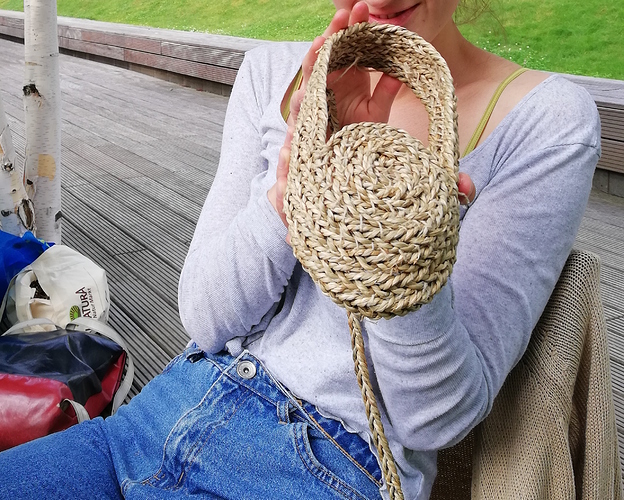
second pic via kulturkurier.de
 Let’s set a trend during OSCEdays 2018!
Let’s set a trend during OSCEdays 2018! 
Go to the comment section to see the workshop documentation.
Who are we / Wer sind wir?
Pauline and Julia, fashion design students at HTW Berlin (University for Applied Sciences). We have been inspired by traditional and ancient garment- and shoemaking aesthetics and techniques using natural, non-toxic, biodegradable materials for a while now. Bast and bark shoes embody all these elements representatively.
What will we do / Was werden wir machen?
We will run TWO WORKSHOPS on Sat, June 16th (each max. 60 min) that show you how to make your own bast shoes/Lapti (similar to the ones above, but our own/ fast version).
Mainly however, over the course of that same day, we are going to explore (shoe-)making using bast and similar materials. We are happy if you come by and experiment. If you have, you should bring your own materials, otherwise we will provide them until our supplies are exhausted.
Time, Place & Supplies / Zeit, Ort und Ausstattung
WHERE | Infralab WS2
- List item
BOOTH │ Sat, June 16th, 11am - 5pm
WORKSHOPS │ Sat, June 16th, 12pm + 4pm à 60min
Address: EUREF-Campus, 10829 Berlin
Space: ca. 5 m^2,
Supplies:
- 1-2 low tables covering up to 4 m^2,
- bast and natural weaving materials if anyone has any surplus
- extra scissors if anyone can lend any
Contact / Kontakt
Text julia@oscedays.berlin or drop me a line below here if you have any questions.
Open Resources / Offenes Wissen
INSPIRATION BOARD
“Lapti are the traditional bast shoes of the Russian peasants. The word lapti apparently originated from the word “lapa”, which meant “foot” in old times, and now means paw. Until the beginning of the 20th century lapti were worn in every Russian village, but nowadays one can hardly find anyone wearing them save for the special occasions, like celebrations or costume shows (…)”. Continue reading: https://russiapedia.rt.com/of-russian-origin/lapti/
(DE) info: http://www.kleidung-web.de/lapti-bastschuhe.html
(DE) “Aus Seegras wurden einst, besonders in Notzeiten, Schuhe hergestellt. (…) durch die geschickte Verwendung meist einfacher Werkzeuge Geräte und Gegenstände des Alltags entstanden. Dafür waren – und sind – neben körperlicher Kraft oft Geduld, eine ruhige Hand und ein scharfes Auge nötig.”
Lies weiter: https://www.schwaebische.de/home_artikel,-seegrasschuhe-entstanden-einst-in-notzeiten-_arid,10083426.html
BOOK
“Bast” by Vladimir Yaris
VIDEO TUTORIALS
Seagrass shoes:
Lapti:
https://www.youtube.com/channel/UCUXD7g12VIRh43x6u-3_JzQ/videos (Lapti channel) and







 When do you want to join, at 12pm or at 4pm?
When do you want to join, at 12pm or at 4pm?


